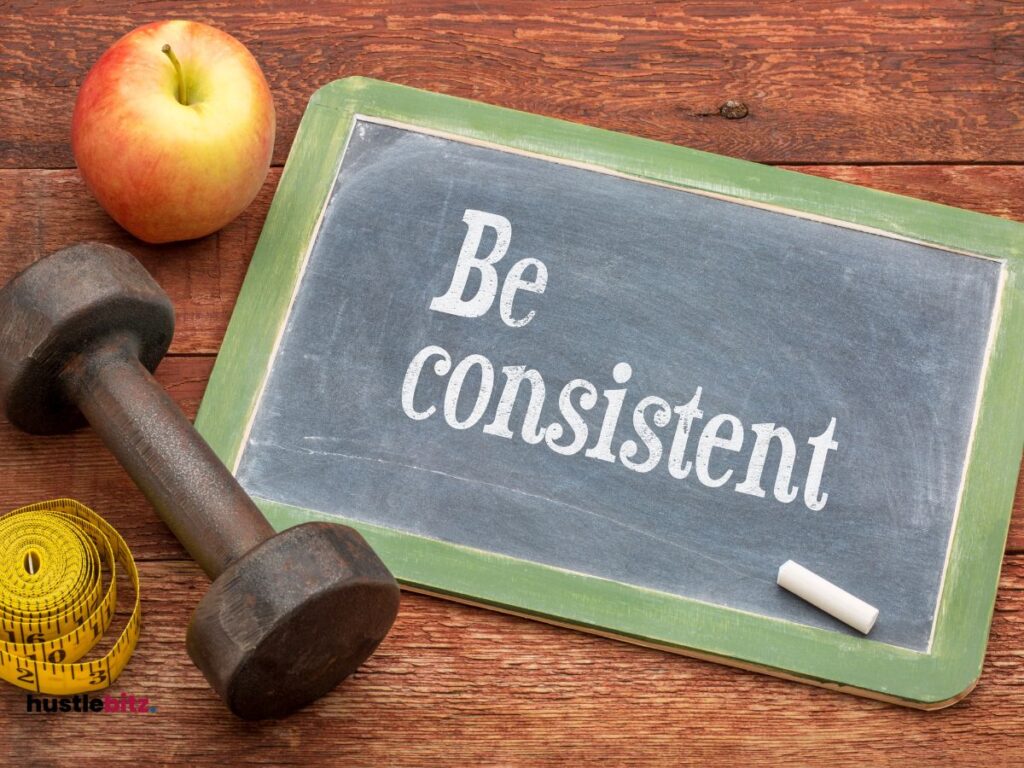Implementing time-blocking involves scheduling dedicated periods for specific tasks, which enhances focus and productivity. Start by assessing your current commitments and identifying flexible time slots. Set clear goals using the SMART criteria to prioritize effectively. Choose time blocks that align with your concentration spans and categorize tasks to minimize transitions. Incorporate regular breaks for mental rejuvenation and utilize tools like Trello or Google Calendar to streamline your schedule. Consistency is key; establish routines and incorporate accountability for sustained motivation. By refining your approach, you can significantly enhance your focus and output, and there’s much more to explore on this topic.
Key Takeaways
- Define clear, measurable goals using the SMART framework to prioritize tasks effectively within your time blocks.
- Schedule focused work sessions of 25 to 90 minutes, aligning them with your peak productivity times.
- Regularly assess your current commitments and identify flexible time slots to optimize your daily schedule.
- Incorporate breaks of five to fifteen minutes to recharge and enhance overall work efficiency.
- Utilize tools like Trello and Google Calendar to organize tasks and streamline time-blocking efforts.

Understanding Time-Blocking

Time-blocking is a productivity technique that involves scheduling specific blocks of time for focused work on particular tasks or projects. This method serves as a structured approach to enhance workflow optimization, allowing individuals to allocate dedicated periods for various activities. By implementing time blocking techniques, one can effectively manage distractions, thereby minimizing interruptions during critical work phases.
A key aspect of time-blocking is its ability to accommodate scheduling flexibility. Users can adjust their blocks based on changing priorities or energy levels, ensuring that they remain productive throughout the day. Common strategies include task batching, which involves grouping similar tasks together to streamline efforts and reduce cognitive load. This not only enhances focus but also improves efficiency.
To maximize the effectiveness of time-blocking, individuals can utilize digital tools designed for productivity tracking and reminders. These tools can aid in monitoring productivity metrics, allowing users to assess their progress and refine their approach over time. Incorporating focus strategies, such as the Pomodoro Technique, can further enhance concentration during scheduled blocks.
Furthermore, having accountability partners can reinforce commitment to the time-blocking plan. Collaborating with others can provide motivation and support, ensuring that individuals remain on track with their goals. By understanding the fundamentals of time-blocking and integrating these elements, one can cultivate a more productive environment conducive to achieving desired outcomes.
Benefits of Time-Blocking

Implementing a structured schedule significantly enhances productivity by providing clear boundaries for focused work and minimizing distractions. The practice of time-blocking allows individuals to allocate specific periods for distinct tasks, resulting in increased productivity and enhanced focus. By defining these time slots, distractions are reduced, enabling a deeper engagement with the task at hand.
One of the primary benefits of time-blocking is improved time management. By breaking down the day into manageable segments, individuals can prioritize tasks effectively, leading to better task prioritization. This method not only fosters goal clarity but also promotes mental clarity, as the mind can concentrate on one task at a time without the burden of multitasking.
Moreover, time-blocking significantly contributes to reduced procrastination. When tasks are scheduled, the pressure to complete them is alleviated, encouraging a more proactive approach to work. This structured method also aids in stress reduction, as individuals can visually see their commitments and allocate time for breaks and relaxation, promoting a better work-life balance.
Ultimately, the benefits of time-blocking extend beyond mere productivity metrics. It cultivates a sense of control over one’s schedule, allowing for the integration of personal and professional responsibilities. By establishing clearer boundaries and fostering a disciplined approach to work, time-blocking can lead to a more fulfilling and effective work life. Embracing this methodology not only transforms how tasks are approached but also enhances overall well-being and satisfaction.
Assessing Your Current Schedule

Evaluating your current schedule is essential for identifying areas where time-blocking can be effectively integrated to enhance productivity. A thorough time assessment allows you to understand your current commitments, revealing how your daily activities align with your productivity patterns and energy levels. By analyzing task frequency and recognizing distraction triggers, you can devise adjustment strategies that optimize your work-life balance.
To effectively assess your schedule, consider the following table:
| Aspect | Details |
| Current Commitments | List all ongoing tasks and obligations. |
| Schedule Flexibility | Identify time slots that can be adjusted. |
| Energy Levels | Note when you feel most productive. |
Understanding these elements will enable you to pinpoint when you operate at peak performance and how best to allocate time for various tasks. For instance, if you recognize that certain times of the day are frequently interrupted, you can create time blocks that protect these critical periods from distractions.
Incorporating time-blocking into your existing schedule requires an honest evaluation of how your time is currently spent. By recognizing patterns in your work habits, you can devise a structured approach to time management that prioritizes essential tasks, allowing for greater focus and output. The insights gained from this assessment are vital for crafting a time-blocking system that aligns with your personal and professional goals.
Setting Clear Goals
Establishing clear goals is crucial for effectively utilizing time-blocking, as it provides a focused framework for prioritizing tasks and allocating time efficiently. The process of goal setting involves defining measurable objectives that align with your long-term vision. This alignment ensures that your daily priorities contribute meaningfully to your overarching aspirations.
To enhance the effectiveness of your goals, consider employing the SMART criteria—Specific, Measurable, Achievable, Relevant, and Time-bound. This structured approach aids in creating actionable objectives that can be tracked and adjusted as necessary. By defining focus areas, you can concentrate your time-blocking efforts on the most critical tasks, thus improving overall productivity.
Incorporating accountability partners into your goal-setting process can further amplify your commitment. These partners can provide motivation, feedback, and support, helping you stay on track with your intentions. They can also assist in refining your productivity metrics, allowing you to evaluate progress systematically.
Regularly revisiting and adjusting your goals ensures that task alignment remains intact, facilitating effective time-blocking. Additionally, employing various motivational techniques, such as visual reminders or reward systems, can bolster your determination to achieve your objectives.
Ultimately, setting clear goals not only clarifies what you need to accomplish but also empowers you to maximize your time-blocking efforts, leading to enhanced focus and output. By establishing a solid foundation through goal setting, you can navigate your tasks with purpose and efficiency.
Choosing Your Time Blocks

With clear goals as your foundation, selecting appropriate time blocks becomes a strategic process that enhances productivity and focus.
The first step in this process is determining the effective duration of each block. Research indicates that most individuals maintain optimal concentration for 25 to 90 minutes, so aligning your blocks with these durations can significantly bolster your output.
Consider your personal preferences and energy peaks when scheduling. Some people are most productive in the morning, while others may find their focus peaks in the afternoon or evening. By aligning your time blocks with these natural rhythms, you can leverage your peak energy for more demanding tasks.
Additionally, task categorization is essential. Grouping similar tasks together in a block can streamline efforts and minimize transition time. Incorporating daily rituals, such as taking breaks or practicing focus techniques, can also enhance your efficiency.
Block flexibility is vital, as unexpected demands may arise. Establishing adjustment strategies can help you navigate these scheduling challenges without derailing your productivity. For instance, if a task takes longer than anticipated, consider reallocating time from less critical blocks to maintain progress on high-priority work.
Lastly, be mindful of environmental factors that may impact your focus, such as noise levels or workspace organization. By thoughtfully choosing your time blocks based on these considerations, you create a tailored approach that maximizes both focus and output, ultimately leading to a more productive day.
Prioritizing Tasks Effectively
Effectively prioritizing tasks is crucial for maximizing productivity, as it allows you to focus on activities that align with your goals and deliver the greatest impact. To achieve this, consider implementing a systematic approach to task management that incorporates essential elements such as task categorization and energy levels. By assessing your daily priorities, you can distinguish between urgent tasks and those that contribute to long-term objectives.
Here are three strategies to enhance your task prioritization:
- Categorize Tasks: Use a matrix to classify tasks based on urgency and importance. This method helps in identifying which activities should be tackled first and which can be scheduled for later.
- Assess Energy Levels: Recognize your peak productivity times and align challenging tasks with these periods. Tasks requiring high focus should match your energy levels, ensuring optimal performance.
- Implement Task Delegation: Whenever possible, delegate less critical tasks to free up time for those that require your unique skills and insights. This not only enhances productivity but also fosters a collaborative work environment.
Engaging in a weekly review allows you to reflect on your task dependencies and adjust your priorities based on productivity metrics and personal values. By consistently evaluating your task management strategies, you can refine your approach, ensuring that each task aligns with your overarching goals and maximizes your output.
Implementing Breaks and Downtime

Incorporating regular breaks and downtime into your schedule is essential for maintaining sustained focus and preventing burnout during time-blocking sessions. Effective time-blocking is not solely about maximizing work periods; it also involves understanding the importance of strategic productivity pauses. The break duration should be tailored to your individual needs, typically ranging from five to fifteen minutes, allowing for adequate mental rejuvenation.
Scheduled relaxation periods can significantly enhance your overall productivity. During these breaks, engage in activities that promote energy restoration, such as intentional breathing exercises or light stretching. This not only aids in stress reduction but also helps clear the mind, preparing you for the next focused task.
Creative downtime is another crucial aspect of this process. Allowing yourself moments of unstructured thought can lead to innovative ideas and solutions, enhancing your work-life balance. Use these intervals for focused reflection; consider what you accomplished and how you can improve your approach moving forward.
Ultimately, the integration of breaks into your time-blocking framework fosters a healthier work rhythm. By prioritizing both work and rest, you cultivate an environment conducive to sustained focus and high output. This balanced approach encourages not just productivity but also personal well-being, making it easier to tackle tasks with renewed vigor and creativity.
Embrace the practice of implementing breaks, and watch your overall performance and satisfaction soar.
Tools and Apps for Time-Blocking

Integrating the right tools and apps can significantly enhance your time-blocking strategy, streamlining the process and helping you stay organized while maintaining productivity.
Utilizing effective time blocking apps allows you to manage tasks, schedule breaks, and allocate focused work periods seamlessly. Here are three essential tools that can elevate your time-blocking experience:
- Trello: This versatile task management tool offers a visual interface that allows you to create boards for different projects. With calendar integration and automation features, Trello helps you organize tasks into time blocks.
- Todoist: Renowned for its focus-enhancing software, Todoist enables users to set priorities and deadlines. Its mobile accessibility ensures you can manage your tasks on-the-go, making it easier to stick to your planned schedule.
- Google Calendar: A staple in productivity tools, Google Calendar offers collaborative scheduling and time tracking capabilities. You can create dedicated time blocks for specific tasks and seamlessly integrate other calendars, ensuring that your focus periods are well-defined.
Maintaining Consistency and Discipline

Establishing a routine that prioritizes time-blocking requires unwavering commitment and self-discipline to ensure that designated work periods are consistently adhered to. To achieve this, habit formation is crucial; it allows individuals to integrate time-blocking into their daily lives seamlessly. Implementing effective self-discipline strategies, such as setting clear goals and maintaining a structured schedule, can significantly enhance focus and productivity.
Engaging with accountability partners can further bolster this commitment. These partners provide motivation techniques and support, ensuring you remain on track during your time-blocks. Additionally, establishing productivity rituals—such as preparing your workspace or engaging in a brief mindfulness exercise—can signal your brain that it’s time to work, facilitating critical mindset shifts.
Overcoming distractions is another vital aspect of maintaining discipline. This includes identifying potential interruptions and proactively addressing them. Tracking progress through time management apps or journals can provide insight into your effectiveness, while also highlighting areas for improvement.
Incorporating reward systems, such as taking breaks or treating yourself after completing a block, can enhance motivation and reinforce positive behavior. Lastly, be open to routine adjustments; flexibility allows you to refine your time-blocking approach based on what works best for you.
Final Thoughts
Time-blocking is a powerful technique that can significantly enhance focus and productivity when implemented thoughtfully. By setting clear goals, choosing effective time blocks, and prioritizing tasks, you can create a structured approach that aligns with your natural productivity rhythms. Integrating regular breaks and leveraging the right tools further optimizes this method, ensuring that you maintain a healthy work-life balance while maximizing output. Consistency and discipline are key to making time-blocking a sustainable part of your routine. As you refine your approach, you’ll likely find that time-blocking not only improves your efficiency but also contributes to greater overall satisfaction in your work.




